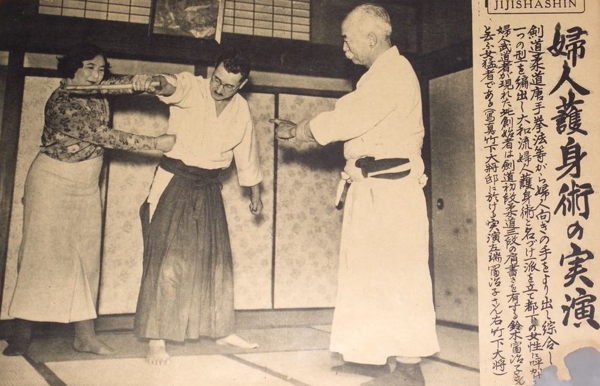
Women’s self-defense demonstration in the Nikkan Jijishashin (日刊時事写真)
Fujiko Suzuki (鈴木富治子), founder of Yamato Ryu Goshinjutsu (大和流護身術), left
Sokaku Takeda and Morihei Ueshiba student Admiral Isamu Takeshita on the right.
Fujiko Suzuki’s “Phantom Manual” is available through the efforts of Scott Burke, who lives in Fukuoka, but often comes to Hawaii to join the Sangenkai workshops with Dan Harden. Many thanks to Scott, and appreciation for his continuing series of “Aikileaks”, which has previously included
- Moritaka Ueshiba’s 1933 technical manual: Aikijujutsu Densho – AKA Budo Renshu, by Moritaka Ueshiba
- Takuma HIsa’s 1940 copy of Budo Renshu as a Daito-ryu manual: Takuma Hisa – Kannagara no Budo, Daito-ryu Aiki Budo Hiden 1940
- Morihei Ueshiba’s 1954 training manual, copies from his 1933 manual: AIkido Maki-no-Ichi
All 243 pages of this beautifully remastered manual are available for download at the bottom of this essay from Scott Burke, which explains what the “Phantom Manual” is and how it is related to Aikido Founder Morihei Ueshiba and Aikido. Enjoy!
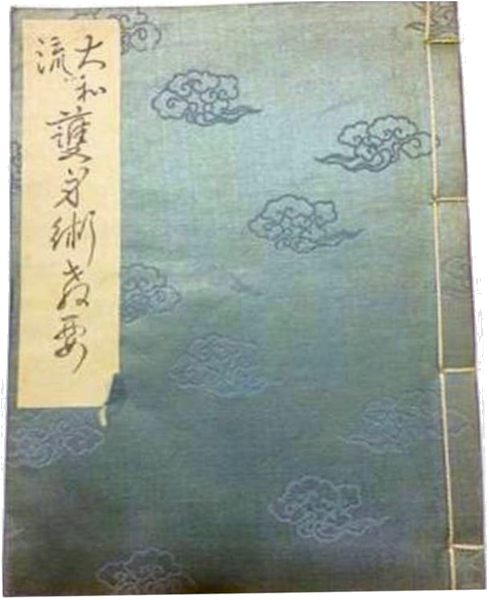 Yamato Ryu Goshinjutsu – 1937, by Fujiko Suzuki
Yamato Ryu Goshinjutsu – 1937, by Fujiko Suzuki
The Phantom Manual: Yamato Ryu Goshinjutsu
by Scott Burke
(And before anyone says it, no, this is not related to any other Daiwa Ryu, Yamato Ryu, or the 1952 Yamato Ryu “Secret Teachings of Self Defense”. “Secret Teachings of Self Defense” does contain numerous drawings copied from Kunigoshi’s Aikijujutsu Densho, so it can be considered a kind of a bootleg. There are also a number of techniques traced from photographs of a 1935 Nakazawa Ryu Goshinjutsu manual as well, I may put together a side by side later. This is a different animal altogether.)
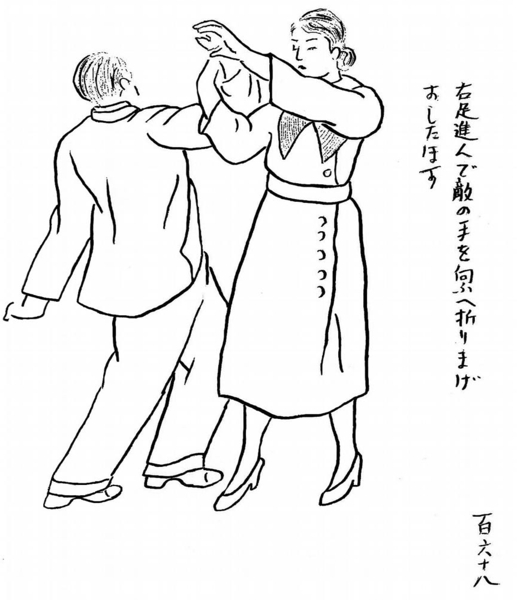 Yamato Ryu Goshinjutsu, Page 183
Yamato Ryu Goshinjutsu, Page 183
This Yamato Ryu is very much a product of Ueshiba’s students. His name is even written in the back indicating some level of oversight over the book, possibly as editor. Unless I’m losing my sight there is no mention of Aiki in this book. There is no mention of Heaven, earth, man or anything obvious pointing towards internal training methods. This is a straightforward collection of self-defense techniques for women in early Showa era Japan. As a historical document, it begs questions about who-knew-who in the mid 1930’s, as there are some interesting names attached to this work.
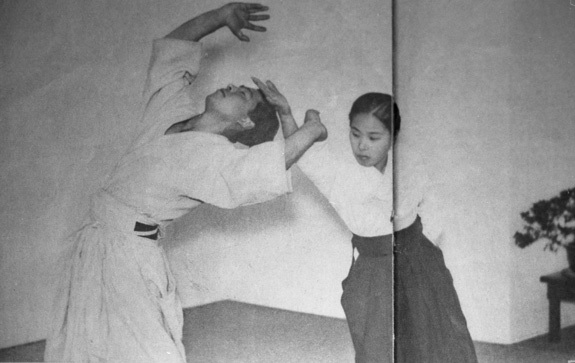 Takako Kunigoshi and Shigemi Yonekawa in 1935
Takako Kunigoshi and Shigemi Yonekawa in 1935
Firstly, the illustrations are by Takako Kunigoshi, one of Ueshiba O-Sensei’s Kobukan era students and the illustrator of the famed Budo Renshu aka Aikijujutsu Densho. There are over two hundred illustrations depicting self-defense techniques. These techniques are often shown with the figures in regular Showa era (1930’s) daily wear, with only a few done with the participants wearing something like dogi. The manual’s authorship is credited to Fujiko Suzuki, a third dan Judo and shodan kendo practitioner. Her signature and a stamp with the characters Yamato Ryu Soke, are on the book. Aside from an article in a 1937 housewife helper’s magazine (below) and the 1937 Jijishashin press clipping (above) there is nothing more definitive that I can find on Fujiko Suzuki so far.
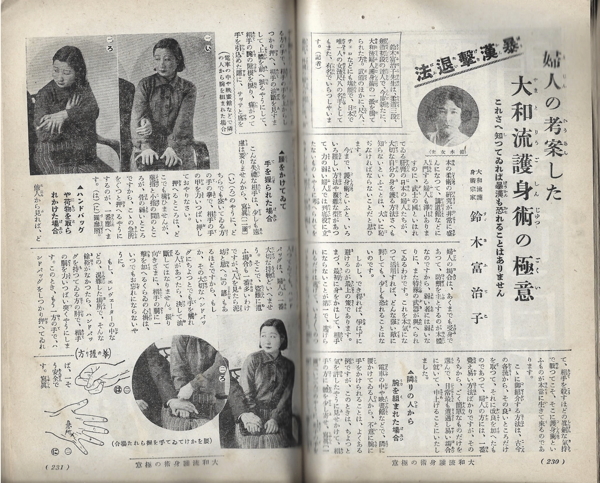
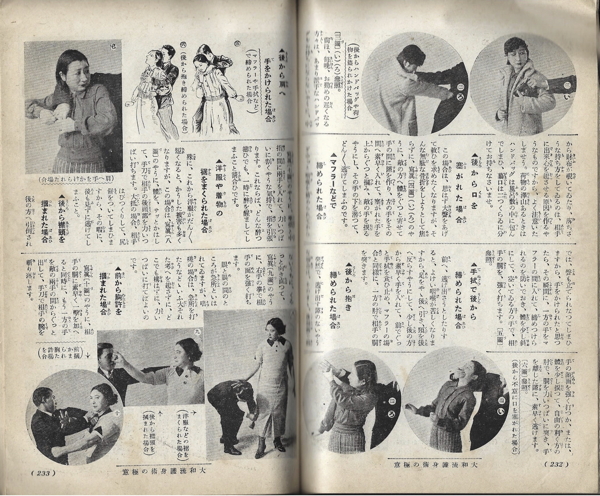
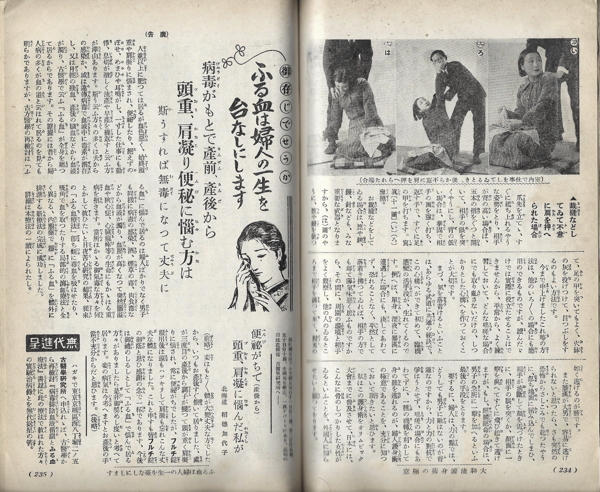 Fujiko Suzuki – “The Secrets of Yamato Ryu Goshinjutsu” (大和流護身術の極意)
Fujiko Suzuki – “The Secrets of Yamato Ryu Goshinjutsu” (大和流護身術の極意)
“How to Beat Off and Defeat Hoodlums” (暴漢撃退法)
Shufu-no-Tomo (主婦乃友) magazine, May 1937
There are some hints that can be gleaned by looking over interviews with Kunigoshi, namely one conducted by Stan Pranin entitled “The Dainty Lady Who Lit Up Morihei Ueshiba’s Kobukan Dojo”:
I started in January of 1933, the year that I graduated from school. I was then able to continue up to a little before the air raids began over Tokyo. At one time I had been asked to teach self-defense to female employees of a company located next to the famous Kaminari Mon (Thunder Gate) of the Asakusa Temple in Tokyo’s old town district. (Kunigoshi goes on to discuss teaching the grand daughter of Lafcadio Hearn and her concerns over the air raids over Tokyo. The earliest air raid was the famous Doolittle raid in April 1942. It seems more likely that Kunigoshi was referring to the large-scale air campaign beginning in 1944.)
Editor: I imagine there weren’t very many women among the deshi in those days.
There were only two of us! The other woman was two or three years younger than myself. I received New Year’s greeting cards from her up until a few years ago. Even now it seems that her nephew is going to the dojo. But as you said, in those days not many women went to train. Ever so, Ueshiba Sensei never made us feel different by changing things “because you are a woman”.
Later on in the article is this:
I started early in 1933 and it was after about a year that we did the book so I suppose it would have been around 1934. These pictures were really difficult to do! I had to do them all twice, you know. Even so I always felt there were some problems left. The second book was never printed after all but… At any rate, this particular version has the first drawings.
In a later exchange about weapons practice Kunigoshi revealed the following:
Just about the time that the war started my alma mater was on summer vacation and I spent something like three days teaching something more akin to self-defense than to Aikido. If we could have taken those 50 people who were to learn and divide then into three groups for three teachers it would have been fine but as it was after the first day one of the instructors’ voices gave out and we ended up having to do the course with only two instructors. I had to take care of 30 of them.
The take away from this, Kunigoshi was actively teaching women’s self-defense classes, there was a second female deshi, and most interestingly, there was a second book, seemingly never published. The first of these take aways is the easiest to accept, Kunigoshi teaching women’s self-defense classes is a given. Next, an unnamed second female deshi. Well, maybe this was Fujiko Suzuki, and maybe not. Access to Kobukan membership records could clear this up quickly, but on that we’ll just have to wait and see what emerges. And lastly, a second book? Is it Yamato Ryu Goshinjutsu? Again, maybe. It’s possible that when Kunigoshi was referring to the second book she was actually referring to Aikido Maki no Ichi, a cleaned up and condensed version of Budo Renshu with some slight variations on technique endings.
 Aikido Maki-no-Ichi Page 52
Aikido Maki-no-Ichi Page 52
Or, she could have been thinking of this book, which actually did see print in 1937, although in obviously smaller circulation than Budo Renshu three years previous. The interview with Stan was several decades after the fact and Kunigoshi could simply have misremembered, I know I would be hard pressed to tell you all the details of the copyright clearance report I did for the MGM film library in 1996, though at the time it held all of my attention. At this point, I really don’t know which theory is correct. Please feel free to provide leads if you have them.
There are handwritten introductions to the manual from different figures, which give weight to the notion that this book is closely related to Ueshiba and his 1930’s cohorts. Restoring this portion of the manual has been tricky, because it is all handwritten and of a style a bit above my ability to read. In some areas the original mimeograph must have accidentally “double stamped” it leaving the initial text especially blurry. I ran the images through Photoshop removing as much grit as I could while retaining the structure of the text. The signatures and titles are larger and easier to read, and besides some lingering grit the calligraphy for the poetry came through clearly.
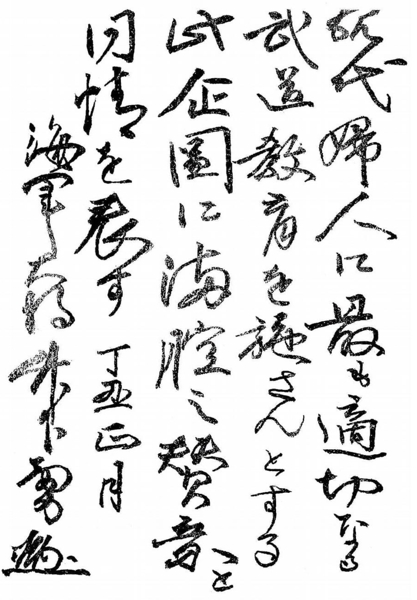 Yamato Ryu Goshinjutsu – Page 3
Yamato Ryu Goshinjutsu – Page 3
The first written portion is a set of poems written with a thick brush and is signed by Munetaka Abe. The Munetaka connection become clear, once again with the help of a Stanley Pranin article titled “Morihei Ueshiba and Gozo Shioda”:
Mr. Munetaka Abe, Gozo (Shioda)’s middle school headmaster, was struck by the outstanding mental attitude of a young woman, Miss Takako Kunigoshi, who cleaned a nearby shrine every morning. When asked about her exemplary bearing, she gave credit to her aikijutsu teacher and suggested the schoolmaster observe a training session. Thoroughly impressed by what he saw at the nearby Ueshiba Dojo, Mr. Abe urged Gozo’s father to enroll his son there.
…Shioda immediately decided to join the dojo. Since two guarantors were required to enter, his father and Mr. Abe provided introductions.
Shioda’s entry to Ueshiba’s dojo is placed at 1932. According to records available online Mr. Munetaka, was principal at the Tokyo Prefecture Number 6 Middle School from 1922 to 1936. The Yamato Ryu manual was published in 1937. Mr. Munetaka obviously stayed in contact with Kunigoshi, so much so that he contributed calligraphy to the project.
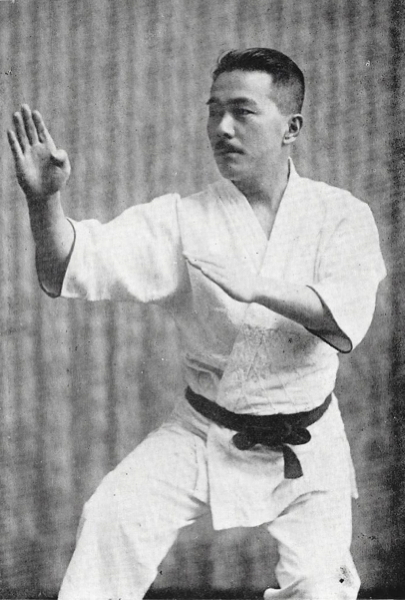 Yasuhiro Konishi in “Karate Nyumon” – 1958
Yasuhiro Konishi in “Karate Nyumon” – 1958
The next entry is a short forward written by Yasuhiro Konishi, who according to Wikipedia was “one of the first karateka to teach karate on mainland Japan. He was instrumental in developing modern karate, as well as a driving force in the art’s acceptance in Japan. He is credited with developing the style known as Shindō jinen-ryū (神道自然流).”
Additionally, Konishi was an early student (1920’s) of Morihei Ueshiba. In at least two of Konishi’s books (please forgive me, I have the books but they are currently somewhere in “the Pile”, and I cannot recall the titles but you have my word that this is the case) he refers to Ueshiba as the head of the Aioi Ryu, a name which Ueshiba only used for a brief period in the 1920’s. Admiral Takeshita also trained with the Aioi group, and Takeshita is mentioned by Kunigoshi in her interviews with Stan Pranin. Additionally, one of the few pictures available of Fujiko SUzuki is of her being instructed by Admiral Takeshita. I’ll speculate on Takeshita and his influence later.
(Note:*There are some tantalizing tidbits in the internal power department concerning Konishi from the Japan Karate Do Ryobu Kai:
At the same time, it is said that Yasuhiro learned from Ueshiba that the art had two kinds of spirit, one expressed externally and one expressed only in mind.
In addition to this little bit of information, Konishi’s 1957 Karate manual touches on Tenchijin theory and how heaven and earth are expressed through the body.
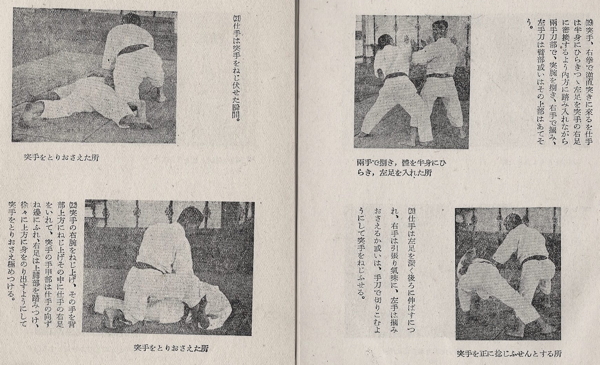 Yasuhiro Konishi in “Karate Nyumon” – 1958
Yasuhiro Konishi in “Karate Nyumon” – 1958
Some more information about Konishi and Ueshiba from Fighting Arts.com:
In about 1935, Konishi Sensei developed another kata – Seiryu. During this period, Konishi Sensei, Ueshiba Sensei, Mabuni Sensei, and Ohtsuka Sensei were training together almost daily. At this time, the Japanese government was largely controlled by top officers of the Imperial Army. Konishi Sensei was asked by the commanding general of the Japanese Army to develop women’s self-defense techniques. His first step in fulfilling the Army’s request was to ask Mabuni Sensei to help him develop standardized training methods, to help the students remember the techniques.
Together, they developed a karate kata that incorporated the essence of both their styles. As they worked to finalize the kata, they shared it with Ueshiba Sensei, who approved some sections, but advised certain changes. Ueshiba Sensei strongly felt that the kata should be modified based on the gender of the practitioner, because of the need to protect very different sensitive areas. Also a woman’s training was normally executed from a natural (higher) stance. Another factor which greatly influenced the kata was the female position in Japanese society. At the time, a woman’s life was defined by cultural customs, though both sexes wore kimono and used geta. All these factors were considered in the process of developing the kata.
So beginning in 1935, plans were afoot to develop a women’s self-defense system, at the behest of a high-ranking military official.
Continuing from the Japan Karate Do Ryobu Kai:
Yasuhiro’s incessant eagerness to acquire the secret of various kinds of martial arts brought him the chance to meet Seiko Fujita, the 14th generation of master of “Koga Ninjutsu” and made him to obtain the license from “Nanban Kito-Ryu”.
Seiko Fujita is the third author featured in the foreword of the Yamato Ryu Goshinjutsu manual. 14th Headmaster or Soke of Kōga-ryū Ninjutsu. aka “The Last Ninja”.
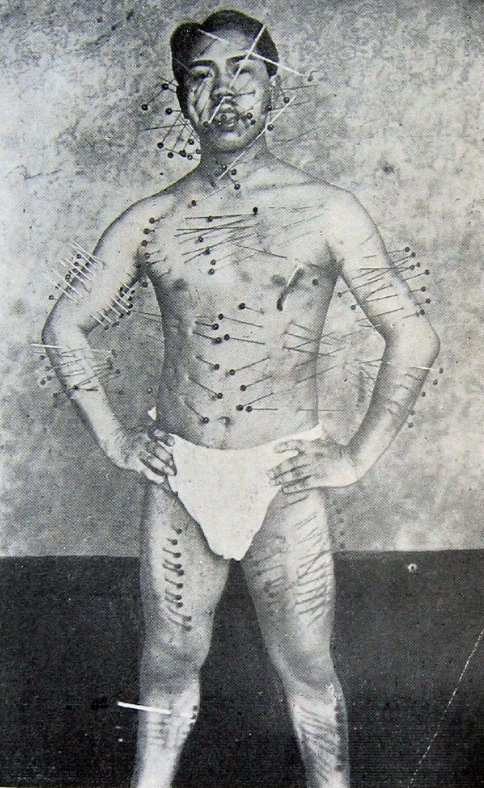 Hard training – Seiko Fujita pierced with 258 tatami needles
Hard training – Seiko Fujita pierced with 258 tatami needles
from “Ninjutsu Hiroku” (忍術秘録) – 1936
And here we have a ninja master, and an instructor of the Imperial Army’s Nakano School writing a foreword to this women’s self defense manual. Ninjutsu is an area where I am out of my depth, so I’ll gladly bend an ear and see what people in that area have to say.
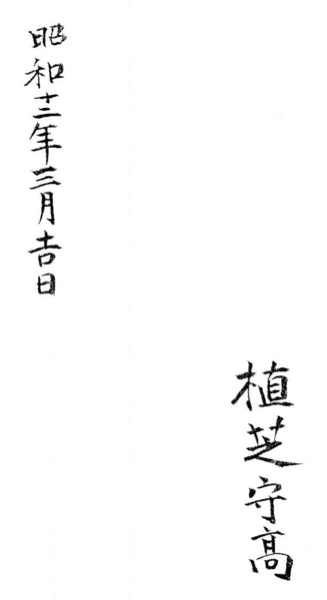 Ueshiba Moritaka, March 1937
Ueshiba Moritaka, March 1937
Yamato Ryu Goshinjutsu – Page 242
Taken together, all of this data points to the idea of a long lost training manual greatly influenced by the teachings of Ueshiba Moritaka, his signature placed down inside the book on an auspicious day, March 1937. One Japanese rare book dealer called this the “phantom book of Morihei Ueshiba”.
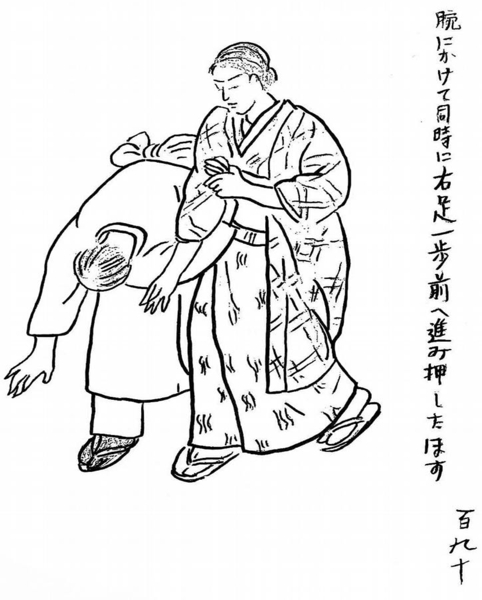 Yamato Ryu Goshinjutsu – Page 206
Yamato Ryu Goshinjutsu – Page 206
It is also possible that this is the sum total of multiple actors working together to create a women’s self-defense manual under the aegis of Yamato Ryu. Or it could be the sole product of a lost talent, Fujiko Suzuki, Soke of the Yamato Ryu. This “phantom book” has been sitting on my desk for a little too long, but now that the picture restoration is completed I’ve decided it is best to release it along with my limited findings in the hope that individuals with more information can shed some light on this previously unknown work. I’ve chased this one for years now. I hope you enjoy giving it a look as much as I did pursuing it.
Yours in the Internal Power/Aiki pursuit,
Scott
- “Yamato Ryu Goshinjutsu” (Dropbox – PDF format / 24.6 MB)
- “Yamato Ryu Goshinjutsu” (Aikido Sangenkai Server – PDF format / 22 MB)
Published by: Christopher Li – Honolulu, HI
All of the content on this site is, and will continue to be, provided free of charge as a service to the community. You can help support this project by contributing a little bit to help support our efforts. Every donation (even $1) is greatly appreciated and helps to cover our server and bandwidth costs, and the time involved. The more support that we get the more interesting new content we can get out there!
By donating you also help support our efforts at Aikido Hawaii, which has provided a state-wide resource for all Aikido in Hawaii, regardless of style or affiliation, for almost twenty years.
Thank you for your support and encouragement,
Chris

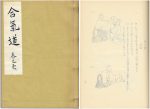
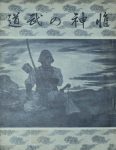
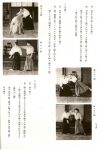
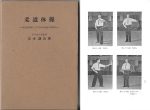


Ueshiba sensei influence is very evident, it feels like this is the second book of Aikijujitsu Densho, only slightly modified for women self defense. Very intresting, thank you a lot for sharing this one.
Hi Marius,
Glad that you enjoyed it! Yes, it’s very similar to Aikijujutsu Densh0, it’s clear where the source is here.
Best,
Chris
Hello Chris,
Thank you for this wonderful discovery and for all your work that I follow with passion.
I am currently working on Yasuhiro Konishi’s biography to be published in the French magazine Dragon (and on my website concerning the biographies of O Sensei’s disciples).
Could you please let me know when Konishi Sensei will start training with Master Ueshiba?
It would be my pleasure to discuss with you, if you wish, my research on the history of Aikido.
Thank you in advance.
With kind regards.
Nicolas De Araujo
http://aikido-montarnaud.fr/index.php/les-maitres-de-l-aikido
Very interesting, thank you for sharing.